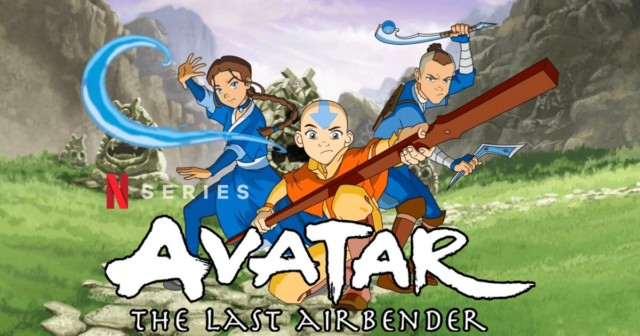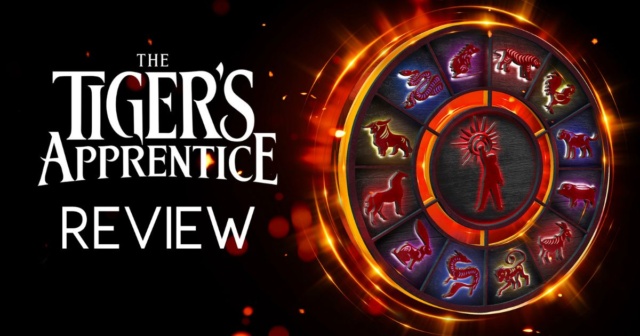Top 10 Avatar: The Last Airbender Episodes from the Animated Series
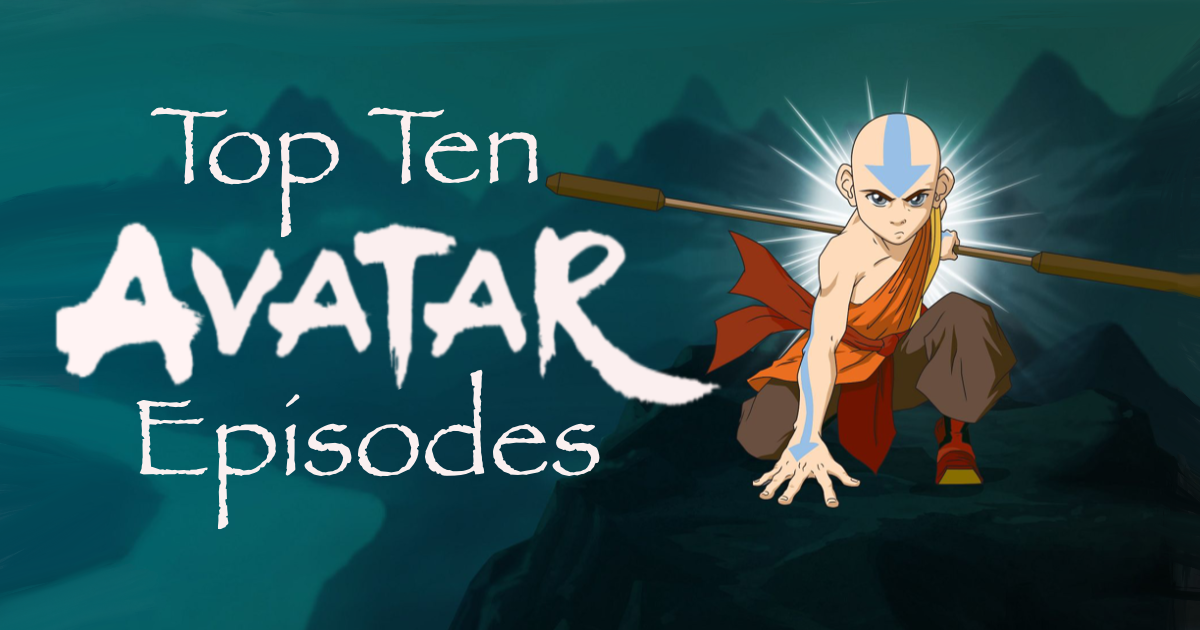
Everyone and their mother seems to have seen and loved the animated series Avatar: The Last Airbender, and for good reason. It’s a masterpiece of a show. Despite originally airing in 2005, the world and characters remain relevant to this day. From the potent themes of striving for balance in the face of war to the dialogue, “My girlfriend turned into the moon,” “That’s rough buddy,” Avatar: The Last Airbender will forever be iconic.
At long last, we are getting a live-action adaptation that isn’t the 2010 atrocity. Will it live up to the beloved animated series’ legacy? We’ll have to see. Meanwhile, it might be a good time for a rewatch. Before we see what the new version has in store, let’s give some love to the original! Here are my top ten episodes of the OG Avatar: The Last Airbender. Read on to see if you agree or not, or just use it to help plan a quick rewatch before the live-action series drops on Netflix.
[Warning: some spoilers for these episodes of the series discussed below!]
#10. Avatar: The Last Airbender season 2, episode 6 – “The Blind Bandit”
We have to start with the introduction of the best character in all of Avatar: The Last Airbender, Toph. If you disagree, argue with the wall.
Team Avatar needs an earth-bending teacher, and finally, they’ve found one: an itty bitty blind girl. This pint-sized pro-wrestler leads a double life. While she spends her nights beating down earthbenders twice her size, she spends most of her time locked up in her family’s estate, pretending to be their sheltered daughter. Convinced that this girl has to be the one to teach him to earth-bend, Aang struggles to convince Toph to run away and join their mission.
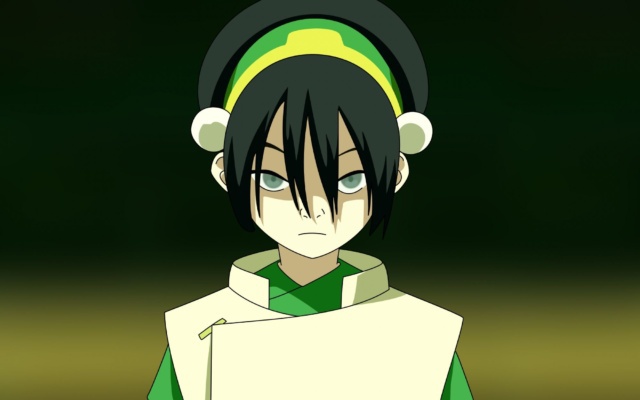
The introduction of Toph immediately shifts the energy of Aang’s group. Her brazen attitude and extraordinary skills change the show for the better. Besides, how can a series NOT improve from the introduction of a blind pre-teen who learned to fight from giant badger-moles and beats up adult men for fun? For that alone, “The Blind Bandit” earns a spot on this list.
#9. Season 3, episode 8 – “The Puppetmaster”
We can’t forget the episode that gave me and many others nightmares as a kid: “The Puppetmaster.” This one is just downright spooky. Team Avatar meets Hama, an old lady who reveals herself to be a former prisoner of war and a waterbender from the southern tribe. She offers to teach Katara the secret that let her escape captivity: how to bend the blood in other people’s bodies. Atmospheric and not just a little bone-chilling, the episode is a great encapsulation of what Avatar: The Last Airbender is truly about.
In an inverse to how the show leads us to demonize fire-bending, up until this episode the audience is led to see water-bending as much softer than it truly is. “The Puppetmaster” shows how any element can become a pretty horrific weapon. Getting charred is bad, having your body puppeted against your will as someone controls your blood flow is downright nightmare fuel. No element is inherently violent; it all depends on how you wield it. It is incredibly potent messaging wrapped up in some excellent storytelling.
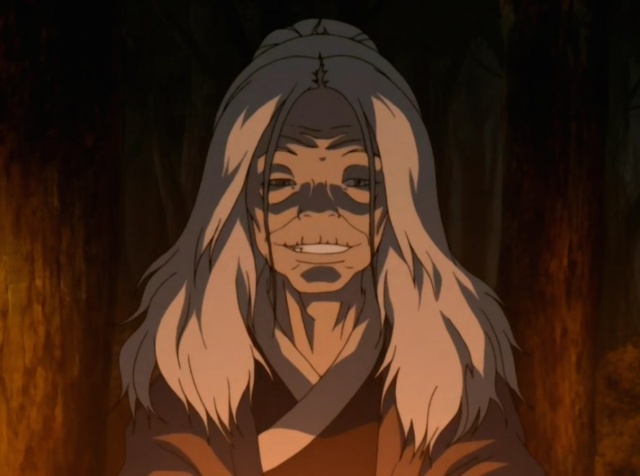
#8. Season 3, episode 17 – “The Ember Island Players”
How often do shows contain their own parody? This episode serves as a much-needed relaxation in tone before the finale, as well as a reminder of how we got here. “Ember Island Players” is a fantastic summary of the plot of Avatar: The Last Airbender if you don’t mind some glaring inaccuracies.
The undercover Team Avatar gets together to watch a play about themselves, and it’s not a very faithful retelling. Aang is played by a girl, Toph is played by a buff guy, and the whole team is made out to seem like incompetent idiots. It’s a very well-done satire, the best kind of self-aware.
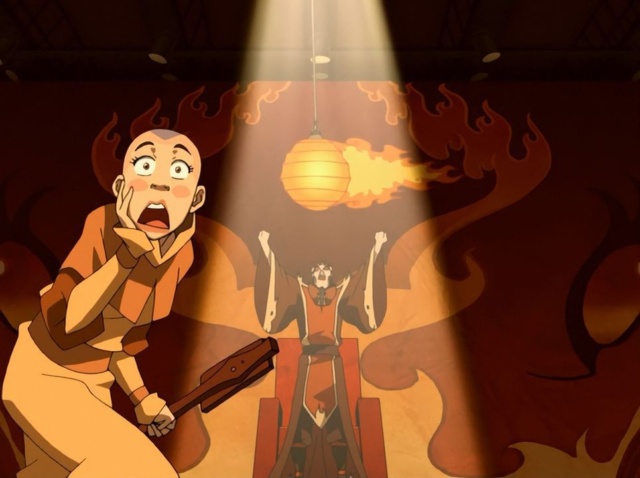
Funny as it is, it gives us a very real insight into our main cast as they reflect on how they are portrayed in Fire Nation propaganda. Faced with their own mistakes on stage, Team Avatar is even more determined and afraid to face down the Firelord. Ending on an image of stage-Aang dying at stage-Ozai’s hands, we are reminded that the stakes are higher than ever for the battle ahead.
#7. Season 2, episode 15 – “Tales of Ba Sing Se”
Who’s ready to ugly cry? Tales of Ba Sing Se is a series of vignettes featuring the cast going about their lives and interacting with the world. It’s an excellent episode for fleshing out characters by letting us see a snapshot into their lives with no real plot significance, the sort of filler we don’t often get from shows these days. No character is more illuminated than Uncle Iroh.
Before this episode, Iroh was often played as a bit. Seeing him honor his dead son’s birthday changed that. We get to see how his loss directly shaped his current worldview and peaceful attitude. It also recontextualizes his relationship with Zuko: a father who has lost his son, and a son who has been abandoned by his father. Just try not to listen to Iroh sing “Leaves on the Vine” without sniffling even a little bit.

#6. Season 1, episode 3 – “The Southern Air Temple”
This episode is key in establishing the tone of Avatar: The Last Airbender. For the first few episodes of the series, Aang is shown as a goofy kid who runs away from responsibility. We know that he missed a lot of time while trapped in that iceberg, but it doesn’t fully seem like it. All of that changes when we see him try and return to the Southern Air Temple, only to find the bleached-white skeletons of all the people who raised him.
This episode makes the war real. It makes the time that Aang missed real. In a blink, everyone he has grown up knowing is gone. We see Aang, a kid who just wants to play, have to face the fact that he might have been able to save his people if he hadn’t run away from his duty as Avatar. This hammers in just what he has been running from, and what will happen if he doesn’t change. “The Southern Air Temple” is the episode when the conflict of the entire show fully sinks in.
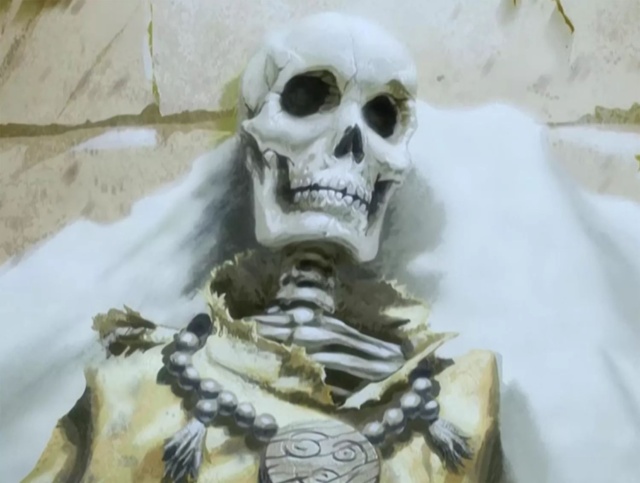
#5. Season 2, episode 7 – “Zuko Alone”
When you ask people what a good redemption arc looks like, many people bring up Zuko as the end-all-be-all of a successful redemption. His journey from main antagonist to awkward friend is iconic, and that’s in large part due to this episode. In this standalone story about Zuko, we see him confront the horrors of war as he chooses to defend a poor Earth Kingdom village. Though he saves them, he is immediately rejected by his new companions when they find out he is a firebender.
Zuko has to take a long, hard look at how people see him, both as a firebender and as someone who has fought for the Fire Nation. We see him confront his idea of who he wants to be. Throughout the entire show, he has worked desperately hard to be recognized by his father and take his place as prince of the Fire Nation, now he has to decide if that’s something he truly desires, and if any of the harm he’s inflicted on others has been worth it. An excellent standalone episode!
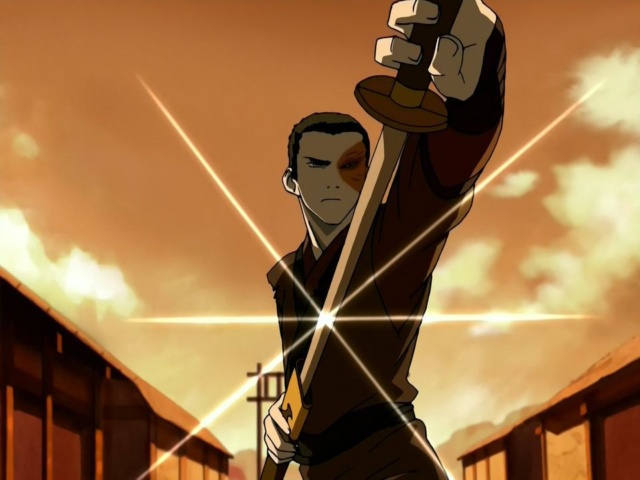
#4. Season 3, episode 13 – “The Firebending Masters”
In the entirety of the show, both Aang and the audience struggle with fire-bending. It is seen as pure destruction, as a tool used to subjugate the world. From the very beginning, we see the terror that the Fire Nation has spread through the world, even to its own people. Zuko carries on his face, proof of just how dangerous fire can be.
In true Avatar: The Last Airbender fashion, they don’t let us sit with this assumption to the end. This episode shows us that it does not have to be this way. Fire-bending can be beautiful, it’s only the awful rule of Firelord Ozai that has taken something wonderful and turned it into a weapon. This shows a key tenant of Avatar’s themes: balance. Aang needs fire-bending. It is part of who he is. It is not evil in itself, like anything, it depends on who uses it.
This episode has excellent character growth, beautiful visuals, and a great message.
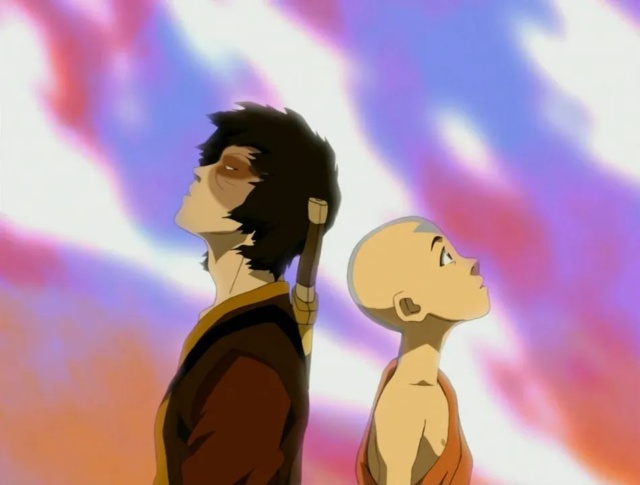
#3. Season 1, episode 19 & 20 – “The Siege of the North” (Part 1 and 2)
Yes, this is technically two episodes, but they’re hard to separate. They come together to make quite a season finale. Book 1 of Avatar goes out with a bang. It’s the battle between fire and water that the entire first third of the show was ramping up to, but more importantly, it’s a message about equilibrium.
The Northern Water Tribe tries to defend themselves against General Zhao’s attack, but things go south when Zhao kills the moon spirit, damaging everyone’s water-bending. However, this choice has catastrophic consequences for everyone, not just waterbenders. You cannot have fire without water, or the sun without the moon. The entire balance of the world is thrown off.
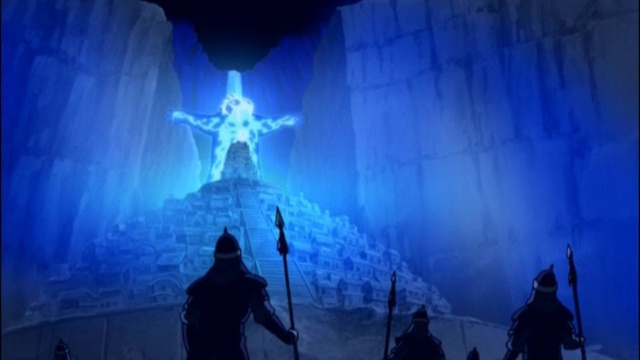
This episode is the first real look we get into the importance of the spirit world. Spirit affects all sides of the war. Damaging it to win a battle is the ultimate act of hubris that will come back to bite you. There is less that separates the elements than our cast of characters believes, a theme that will be pivotal for the rest of the series.
Of course, there are plenty of incredible scenes. From Yue becoming the moon to Aang merging with the ocean spirit, these episodes are full of memorable moments and gripping action. It’s definitely worth a rewatch!
#2. Season 3, episode 10 & 11 – “Day of the Black Sun” (Part 1 and 2)
This is another two-parter. Sue me. “Day of the Black Sun” is a mid-season climax. It’s one of the episodes most likely to get you hyped, which in a show like Avatar is saying something.
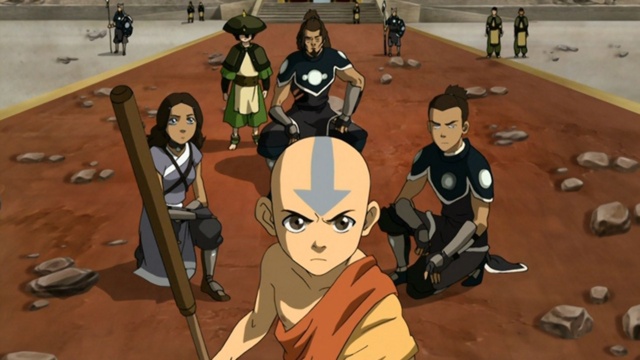
With the eclipse finally upon them, Team Avatar bands together with all their allies to launch an invasion of the Fire Nation with the hopes of finishing their attack before the firebenders get their abilities back. Almost every ally the gang has made in the past few seasons comes together to fight, from Katara and Sokka’s father to Toph’s old wrestling rivals. We get action-packed battles, Zuko confronting his father, and the line “Pants are an illusion and so is death” all in one episode. It’s both satisfying and nerve-wracking.
And, of course, our heroes do not win. After all that planning, they’re still overpowered. This episode is an excellent precursor to the finale. It shows us how much the cast has grown, while also reminding us of the very real possibility of failure. “Day of the Black Sun” perfectly sets up the rest of the season.
#1. Avatar: The Last Airbender series finale “Sozin’s Comet”
The series finale of Avatar: The Last Airbender has got to be at the top of this list. It can be very easy to drop the ball when tying together all the loose ends of a story, but this series wouldn’t be the masterpiece it is without sticking the landing. Three seasons of character arcs and plot lines are perfectly wrapped up in this 92-minute final episode.
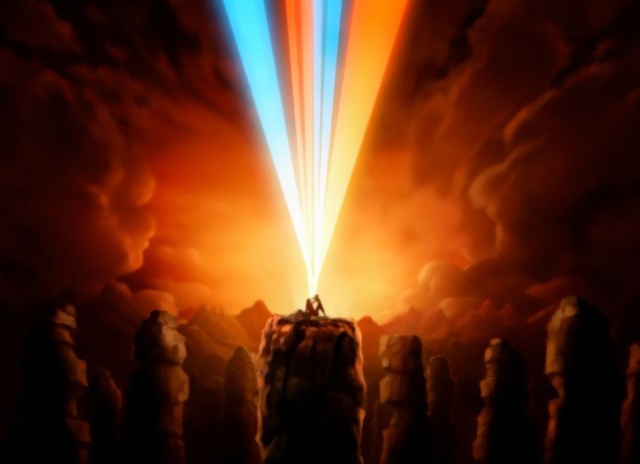
This final episode is jam-packed with grim action. We got all the victories we wanted, although none of them were how we expected. There’s the defeat of Azula, which is smartly played as tragic rather than triumphant, and of course, Aang’s final battle with Ozai. Aang finally comes up with a solution to the problem that’s been plaguing him for three seasons: he is a pacifist, yet he has to kill the Firelord. The kid is a vegetarian who wants everyone to get along, how can we expect him to want to kill Ozai, if he’s even capable of it? Through his conversations with the long-anticipated Lion Turtle, we see him finally realize what he is going to do. Taking away Ozai’s bending is a perfect resolution. It is brutal, and yet a victory for Aang’s belief in peace.
This episode ranks on top for being a perfect ending to an already amazing show.
What’s your favorite episode from the Avatar: The Last Airbender animated series?
Of course, just about every episode of the animated Avatar: The Last Airbender series is excellent. There are plenty of wonderful episodes not on this list. You can watch all 3 seasons of Avatar: The Last Airbender animated series on Netflix and catch the new live-action adaptation when it is released on Netflix on February 22, 2024.
What are your favorite episodes of the animated series? Are you excited about the Avatar live-action? Let us know on social media @mycosmiccircus or on The Cosmic Circus Discord!
What To Expect From Netflix’s Avatar: The Last Airbender
Review: Percy Jackson and the Olympians Season 1 Finale
Review: Voice Cast Helps Make The Tiger’s Apprentice a Fun Movie Despite Changes

